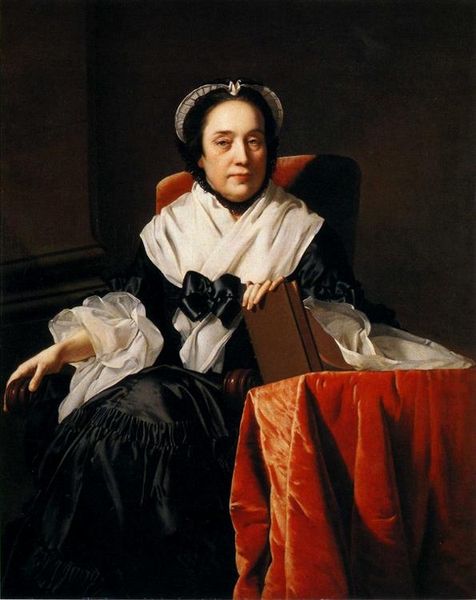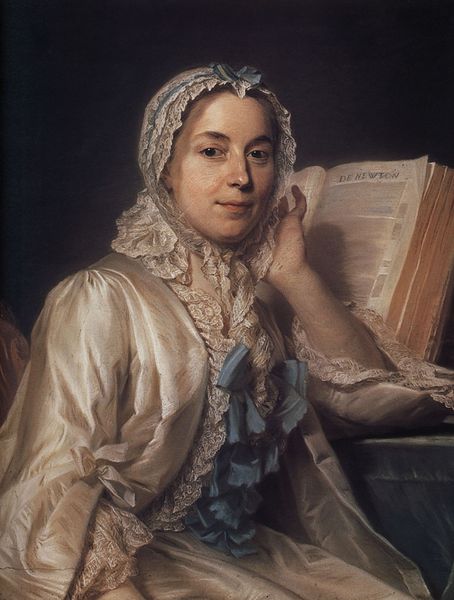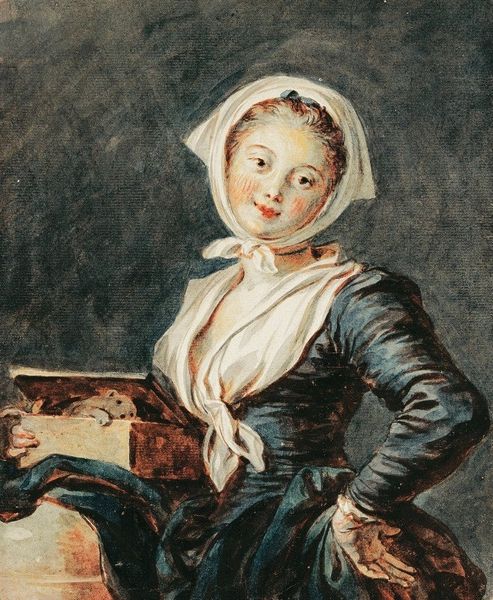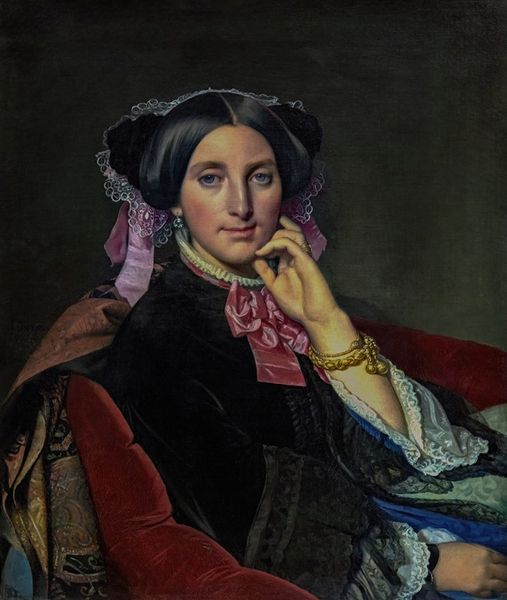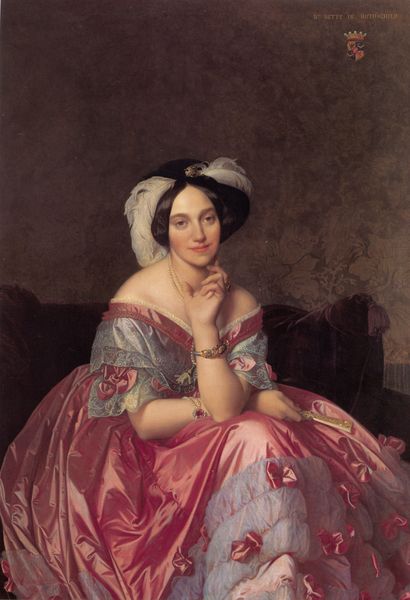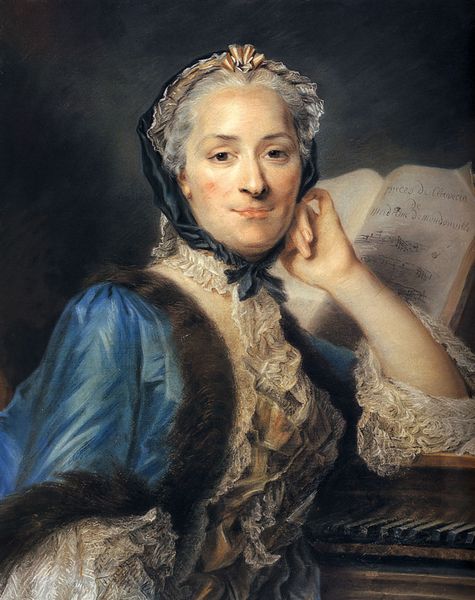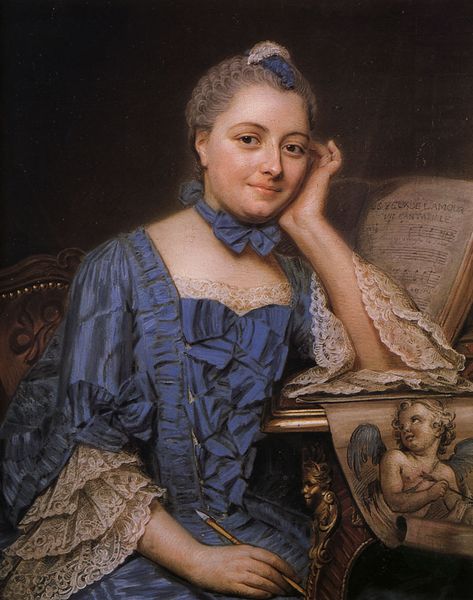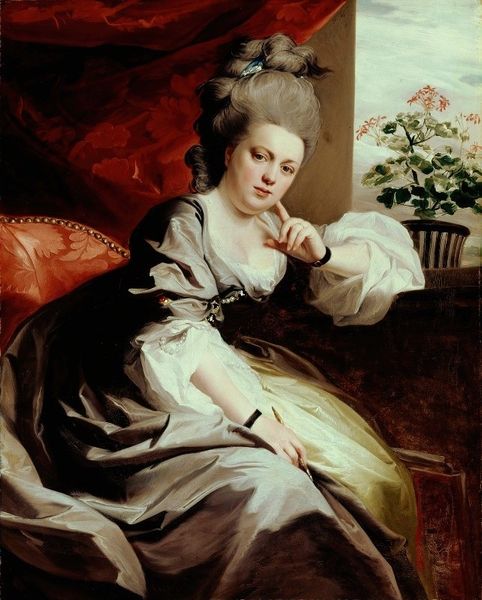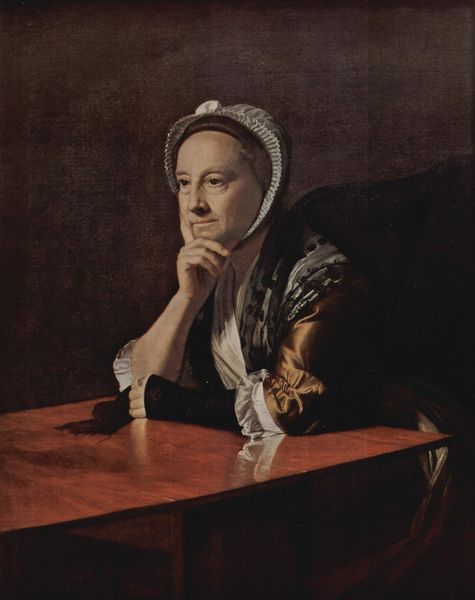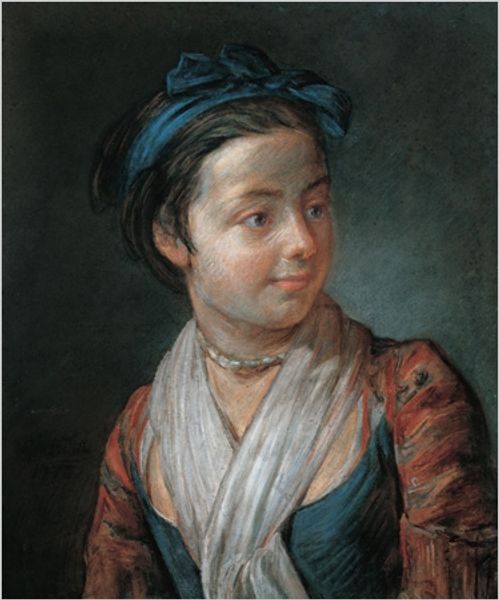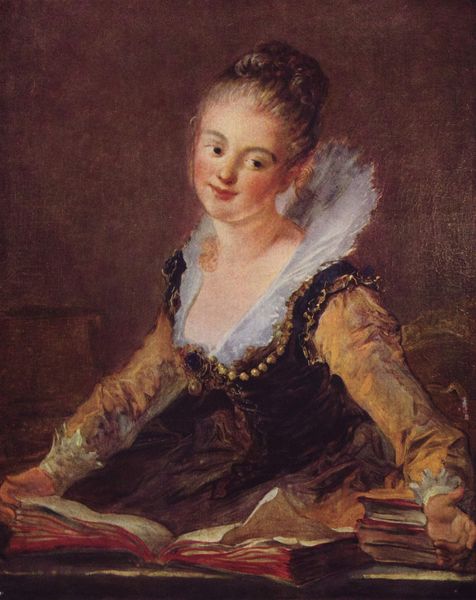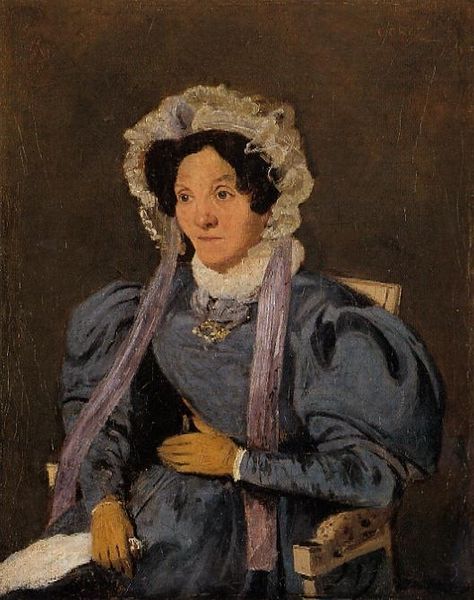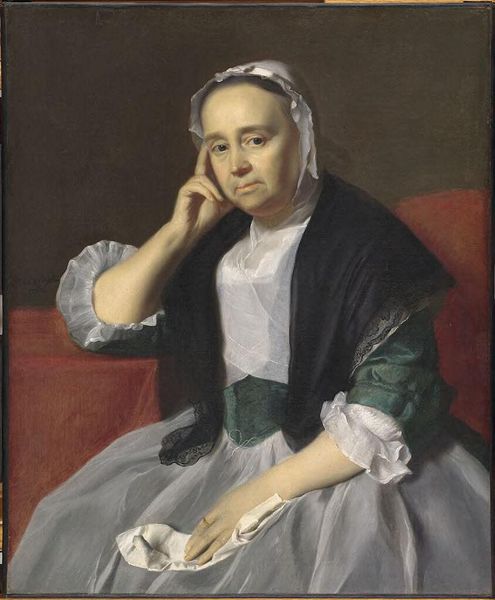
Portrait of Louise D'épinay 1759
0:00
0:00
jeanetienneliotard
Musée d'Art et d'Histoire, Geneva, Switzerland
painting
#
portrait
#
character portrait
#
portrait image
#
painting
#
portrait reference
#
portrait head and shoulder
#
portrait drawing
#
facial portrait
#
academic-art
#
portrait art
#
fine art portrait
#
rococo
#
celebrity portrait
#
digital portrait
Copyright: Public domain
Curator: Here we see Jean-Étienne Liotard’s "Portrait of Louise D'Épinay," painted in 1759. It is currently housed at the Musée d'Art et d'Histoire in Geneva. Editor: Immediately, I’m struck by how intimate it feels. The gaze, the slight smile, it's so inviting for a formal portrait of the period. It breaks down a certain societal barrier; the pose and the volume give such life to the subject. Curator: Indeed. Liotard’s approach here does diverge from the typical, more aloof portraits favored by the aristocracy at that time. The open book she’s holding speaks to her intellectual pursuits; after all, Louise D'Épinay was a woman of letters. The color choice helps frame and characterize a mood with high symbolic value. Editor: Absolutely. D'Épinay was an important salonnière. Her writing and her influence within Enlightenment circles need highlighting, especially when we look at representations of women from this period, which typically either put them on pedestals or erase them altogether. This piece is important because it does none of these. Curator: She occupies a more ambiguous space. The Rococo style, with its delicate palette and attention to detail, could risk trivializing the sitter; however, Liotard's precise rendering and D'Épinay's intelligent expression work against that. I want to add that her status made possible a freedom for art and the evolution of public knowledge of it. Editor: The gaze seems directed at me; her expression suggests, perhaps, active consideration. It reflects back to us the role of women of the period and their own personal role. It's a silent challenge to traditional gender roles and the patriarchal underpinnings of the French Enlightenment. Curator: Yes. It prompts one to look deeper into the social dynamics that defined both her life and Liotard's practice. Editor: Agreed, it invites a rich interpretation; I look forward to researching it.
Comments
No comments
Be the first to comment and join the conversation on the ultimate creative platform.
